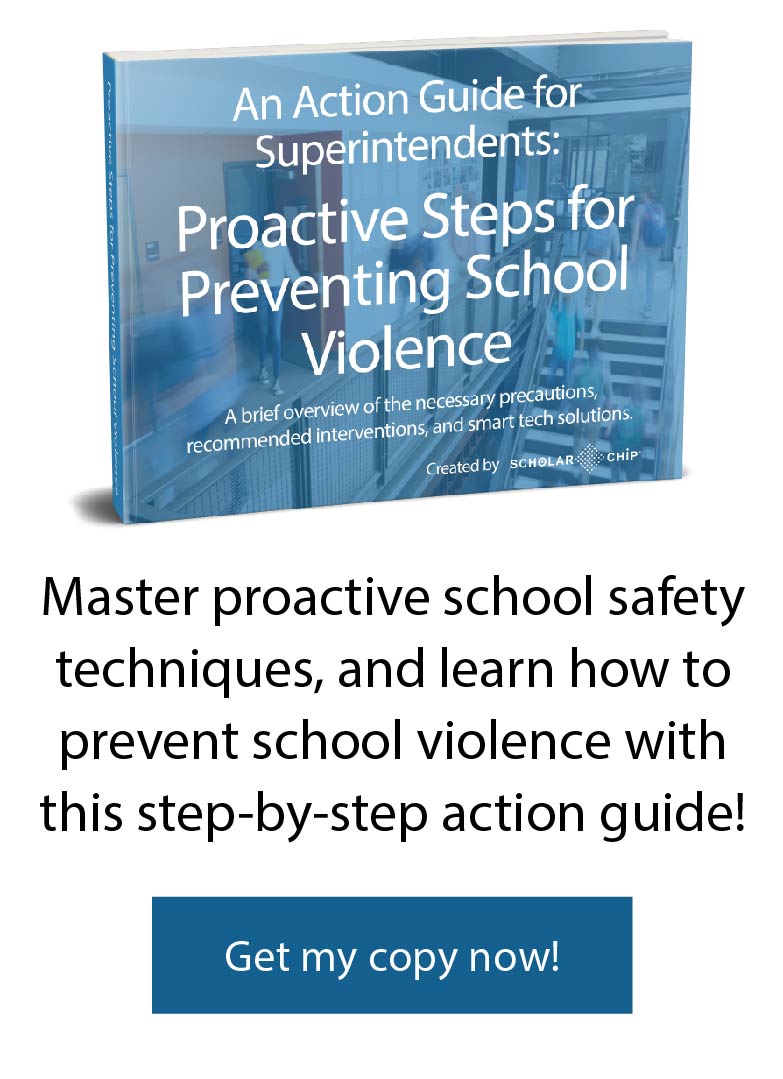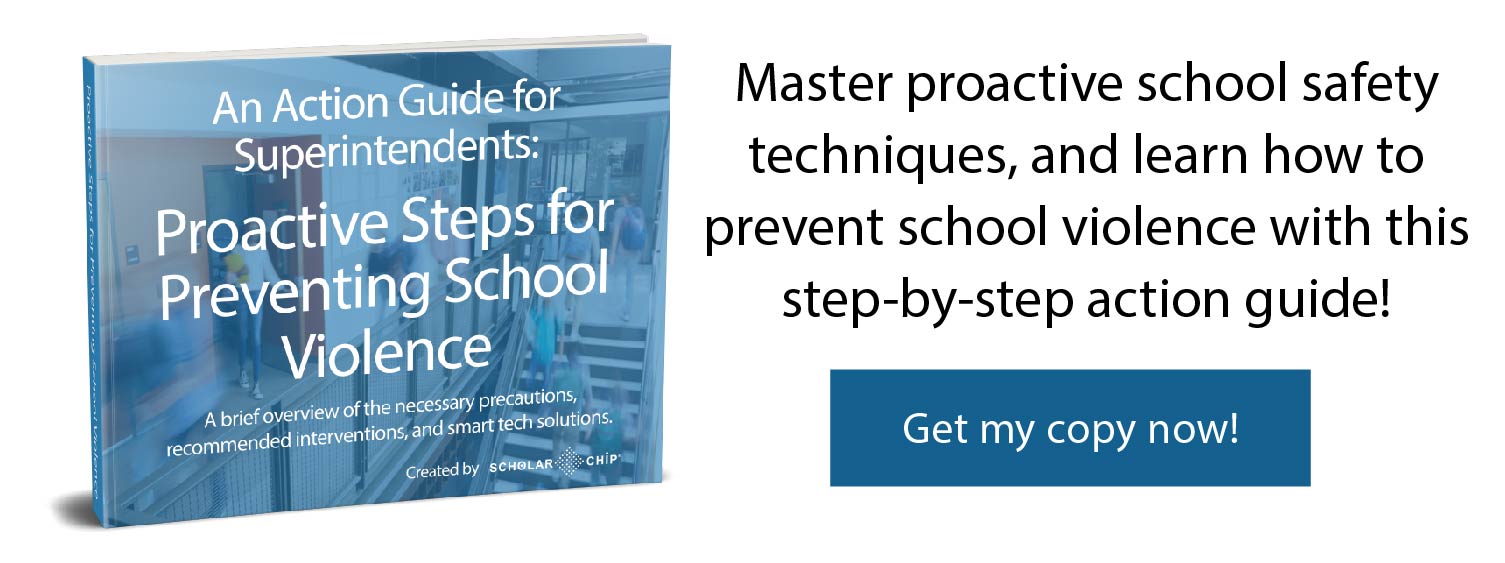There are increasing threats and incidents of violence within school grounds and officials will not know. Here’s a fun statistic, Educator’s School Safety Network study reported that violence increased 113 percent during the 2017-2018 school year for 279 violent incidents. For the previous year, there were 131 such incidents.
There are numerous reasons for the increasing numbers of school campus violence:
Risk Factors
For school superintendents, there are many challenges when trying to tackle school violence. According to the Centers for Disease Control and Prevention (CDC), youth violence begins early on. Physical aggression is common among toddlers but most children learn alternatives to solve problems and express emotions before beginning school. However, some may remain aggressive and become more violent.
Some risk factors include:
- Impulsive behavior
- Lack of social and problem-solving skills
- Poor emotional control
- Chronic stress
A student may also have actual difficulties in understanding the material that’s being taught, serious issues regarding the home environment, or having a medical condition that inhibits learning.
Harassment and Bullying
Where does bullying occur?
Bullying can occur at anytime. Even though most are reported within the school, a large percentage also happens outside school grounds or in the bus. It can also occur going to or from school, in the child’s neighborhood, or … on the Internet.
Cyberbullying takes many forms such as:
- Text messages
- Social media like Facebook, Snapchat, Twitter, and Instagram
- Social media messaging features
Fighting as a Result of Harassment
Any of the above may cause fighting, whether it’s the bully or the victim, or students who are carrying grudges. As problems arise and go away within schools, superintendents have a great deal on their plates. Their administrators have a large number of school obligations.
Complaints regarding harassment must be investigated to determine what happened and resolve them through the following:
- Immediate and appropriate action to learn what happened
- A prompt, thorough, and impartial enquiry
- An interview with the targeted students, offending students and witnesses, and maintain written documentation of the investigation
- Communication with the targeted student(s) about the steps taken to end the harassment
- See the targeted students to ensure the harassment has ended
If the investigation shows that harassment occurred, the school should take steps to:
- End the harassment.
- Prevent the harassment from recurring.
- Prevent any retaliation against the targeted students(s) or complainant(s).
Violence to Severe Violent Incidents
In some cases, violence in schools can escalate into severe incidents. There are the heartbreaking recent occurrences, and there are also the increasing frequencies with which violent threats and acting upon situations are extremely disconcerting. Any one of these may act as a trigger for someone contemplating the unimaginable. Consider these:
- Bullied and/or cyberbullied
- Pre-existing emotional behaviors – such as Anxiety Disorder, Bipolar Disorder, and Oppositional-Defiant Disorder
- Pre-existing medical conditions – such as asthma, obesity, seizure disorders, anxiety, influenza, diabetes, and vision problems
- Chronic absenteeism
Chronic Absenteeism
A US Department of Education Civil Rights Data Collection First Look report showed that nationwide:
- More than 6.8 million students— or 14% of all students— are chronically absent for 15 or more school days during the school year.
- More than 3 million high school students—19% of all high school students—are chronically absent.
- More than 3.8 million elementary school students—or 11% of all elementary school students—are chronically absent.
If these students are absent, where are they? And how many of these students have fears of bullying or violence, whether it’s in school or traveling to and from school? It’s very important to understand the impact of chronic absenteeism with students and the school. That is the core root of the issue toward student safety and success.
Your Job
School district superintendents can come under heat from the tiniest issue to the largest ones. As a superintendent, you have a great deal to face each and every day. You have to protect children with their federal civil rights in mind, but you also have to maintain a safe and secure school premises from violence, especially from school absentees and unauthorized individuals.
There’s the ongoing need for you to:
- Prevent violent or harassment-related incidents.
- Perform your day-to-day duties.
- Leverage any student resources.
- Lower your state-reportable fights and bullying incidents.
- Reconcile inaccurate attendance procedures and data.
- Keep government mandates for legislation upheld.
- Maximize your district’s community views.
If you’re losing your funding, or about to, your concern turns to:
- Poor test results.
- Drops or significant drops in attendance and graduation.
- Ways to improve your school district report card or ranking.
Good News for Schools
Every superintendent’s concern is how they can improve their schools’ security, but there’s a concern over money. There are proactive ways to receive monies for your district in order to introduce new student resources:
- Investigate and apply for state and federal government grants
- Consider grants specifically designed for issues with school violence
Some schools and districts were successful in obtaining awards for implementing their security situations:
- The Michigan State Police awarded $25 million under the 2019 Competitive School Safety Grant program to 135 public schools, 20 charter schools and nine intermediate school districts/regional educational service agencies.
- Several area school districts in Ohio received funding for School Safety Training Grants. The grants were through a provision of Ohio State Amended Substitute House Bill 318 for school safety.
- The Commonwealth of Pennsylvania awarded $6.5 million in grants for prevention and violent incident reductions through programs and security equipment.
- The Department of Justice (DOJ) announced a $70 million grant to support school safety through the STOP School Violence Act.
Incorporate Technology
There are a tone of proactive solutions to solving and reducing issues that arise with student and school safety. Technology will help prevent school violence and increase your student resources in your schools.
With a new, smart technology as a potential and proactive way to help improve student resources and safety, you will need a dedicated partner in crime.
A Proactive Solution to School Safety
In the 21st century, student and school safety are critically important. Administrators must have the ability to track students as well as manage visitors on school property. It’s also crucial that campus visitors are tracked both on the grounds as well as inside school buildings.
ScholarChip has a few services that help offer confidence in tackling student and school safety:
ScholarChip’s Alternative Behavior Educator (ABE) teaches better behavior and monitors student behavior throughout his or her career. For students exhibiting aggressive, defiant, disruptive anti-social, impulsive, or over-active behaviors, ABE is able to flag these behaviors and take actions for these at-risk students. ScholarChip also offers the One Card, that lets students and staff tap embedded chip cards onto readers so they’re automatically identified. Students are held accountable for their own attendance. The school is able to track and notify once a student may be chronically absent. Lastly, their Visitor Management System will help screen new visitors onto your campus, allowing a quick background check and crosscheck toward a registered sex-offender database.
ScholarChip is an all-in-one platform solution to comprehensively help reduce school threats and address the important issues surrounding school safety and violence. Data from students, faculty, and stakeholders are leveraged to manage school access, attendance, and behavior management through the platform’s tools to improve campus climate, promote safety, and prevent violence.
To learn more about how you can increase student resources for reducing student and school violence, schedule a 1-on-1 strategy session with one of our specialists today!


